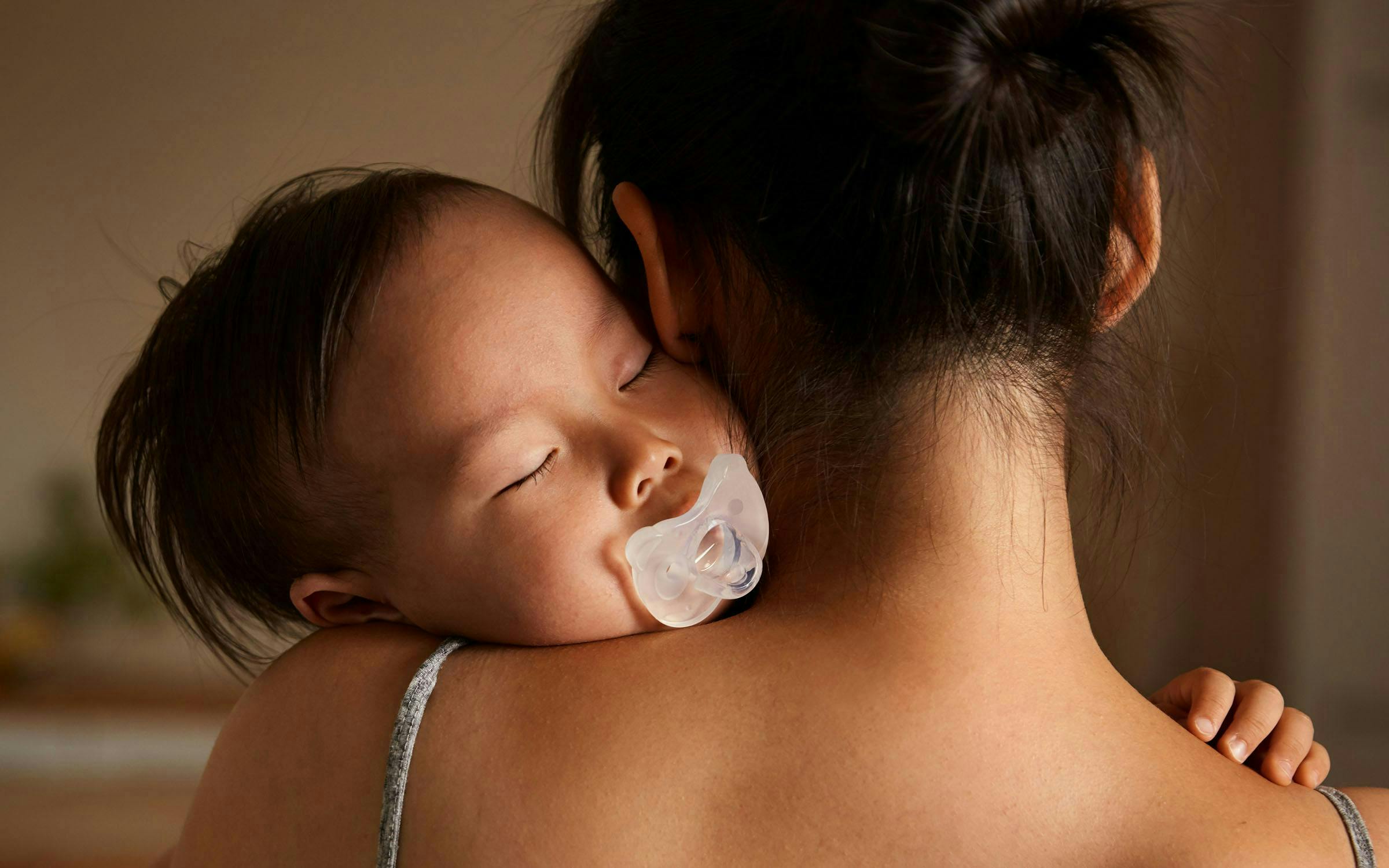Designing for babies
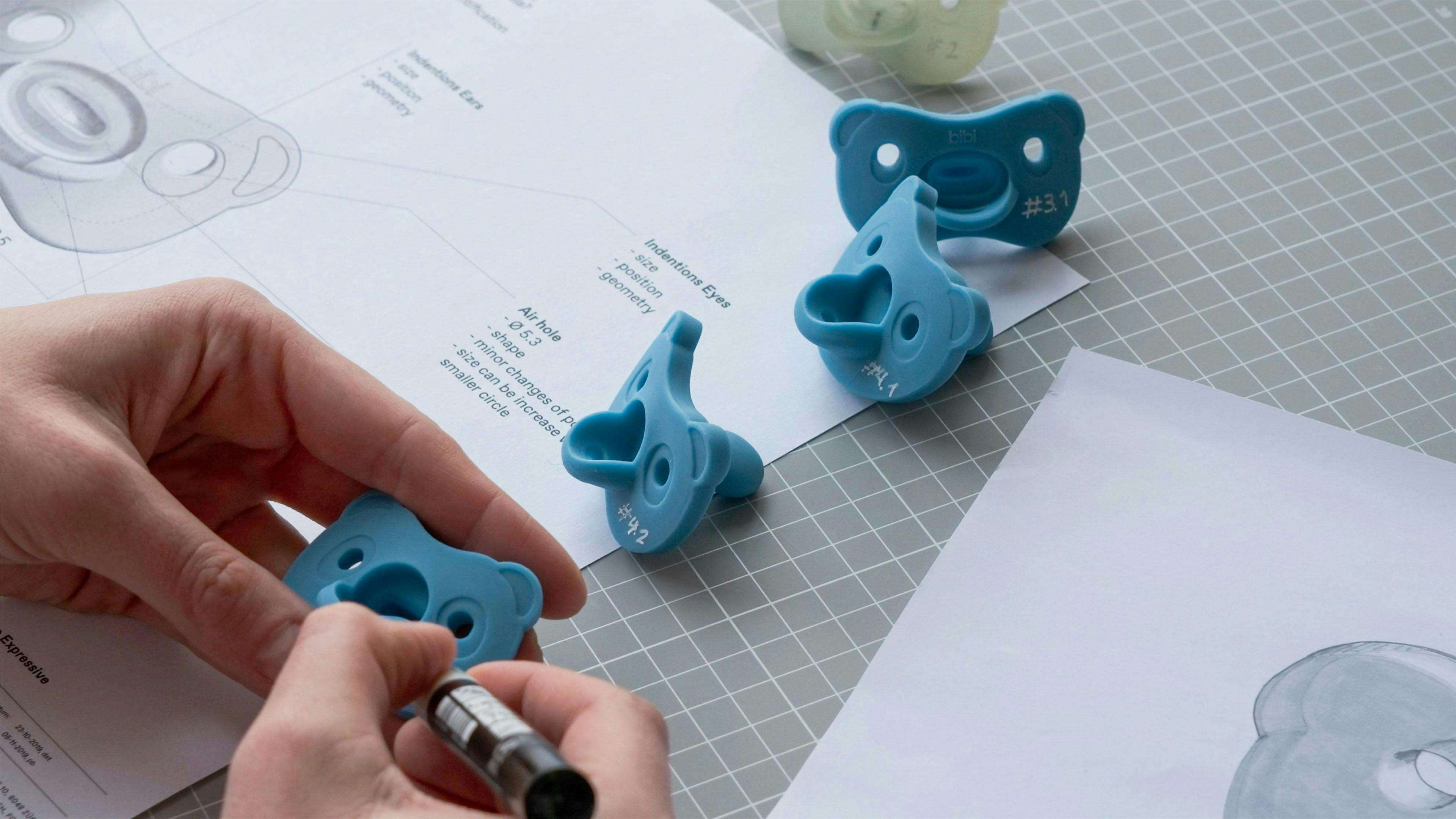
When designing pacifiers for optimal user satisfaction, it is essential to balance cuteness, ergonomics, and manufacturing technology. However, achieving this can be challenging as babies and parents have vastly different needs and expectations.
Pacifiers are substitute nipples made of a soft material that are given to babies and toddlers to satisfy their need to suckle and to self-soothe. Millions of babies around the world use pacifiers, and even more parents rely on them as a means of achieving a moment of peace and calm amidst the demands of parenting. The pacifier industry is a lucrative market worth millions, thanks to human reproduction. However, it is a highly regulated and competitive market, with many suppliers competing for the favor of both babies and parents. Industrial design plays a key role in the product development process in many regards. It routinely navigates regulatory, material, and production constraints, incorporates user needs, and leverages the limited space for differentiation to help the client's brand stand out in this market.
Brand loyal babies
What is the first step in the user-centered design process of a pacifier? Taking one in your mouth and experiencing what it feels like to suckle again. After all, our main users - babies - are not able to tell us what feels best. And babies are picky when it comes to their pacifiers. The shape and feel of the nipple must be just right, or they will spit it out. And babies are pretty brand loyal. Once they get used to the geometry of a particular pacifier, they are rarely willing to accept a competitor's product. This behavior, coupled with the risk-averse nature of parents, results in a conservative approach among producers and the market, leading to limited opportunities for innovation and new designs.
A crucial factor in designing a pacifier that is effective is having a deep understanding of ergonomics. Infants and young children experience rapid growth over the three-year period when pacifiers are used, resulting in significant changes in their head and jaw ergonomics. Consequently, the geometry of the pacifier must be scalable to accommodate these changes. Typically, three distinct sizes are developed based on the child's age, which consider their growth and are suitable for production.
But the design process is not all about ergonomics. It is based not only on self-experiments and interviews with professionals like orthodontists, dentists, childcare providers, and midwives but also on numerous conversations with parents, grandparents, and siblings. As a result, additional requirements arise, which are of little concern to the babies but are crucial for the parents who purchase the product. Pacifiers must be attractive, cute, hygienic, modern, and safe. Since parenthood is a significant social phenomenon, most parents also want their product choices to reflect their competence as caregivers.
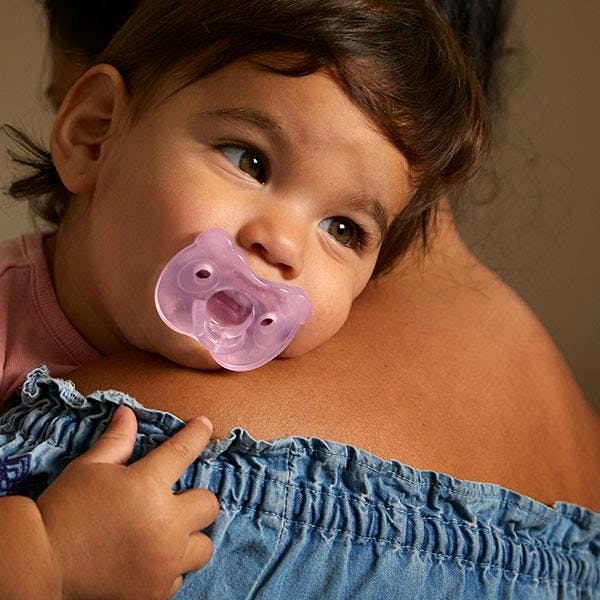
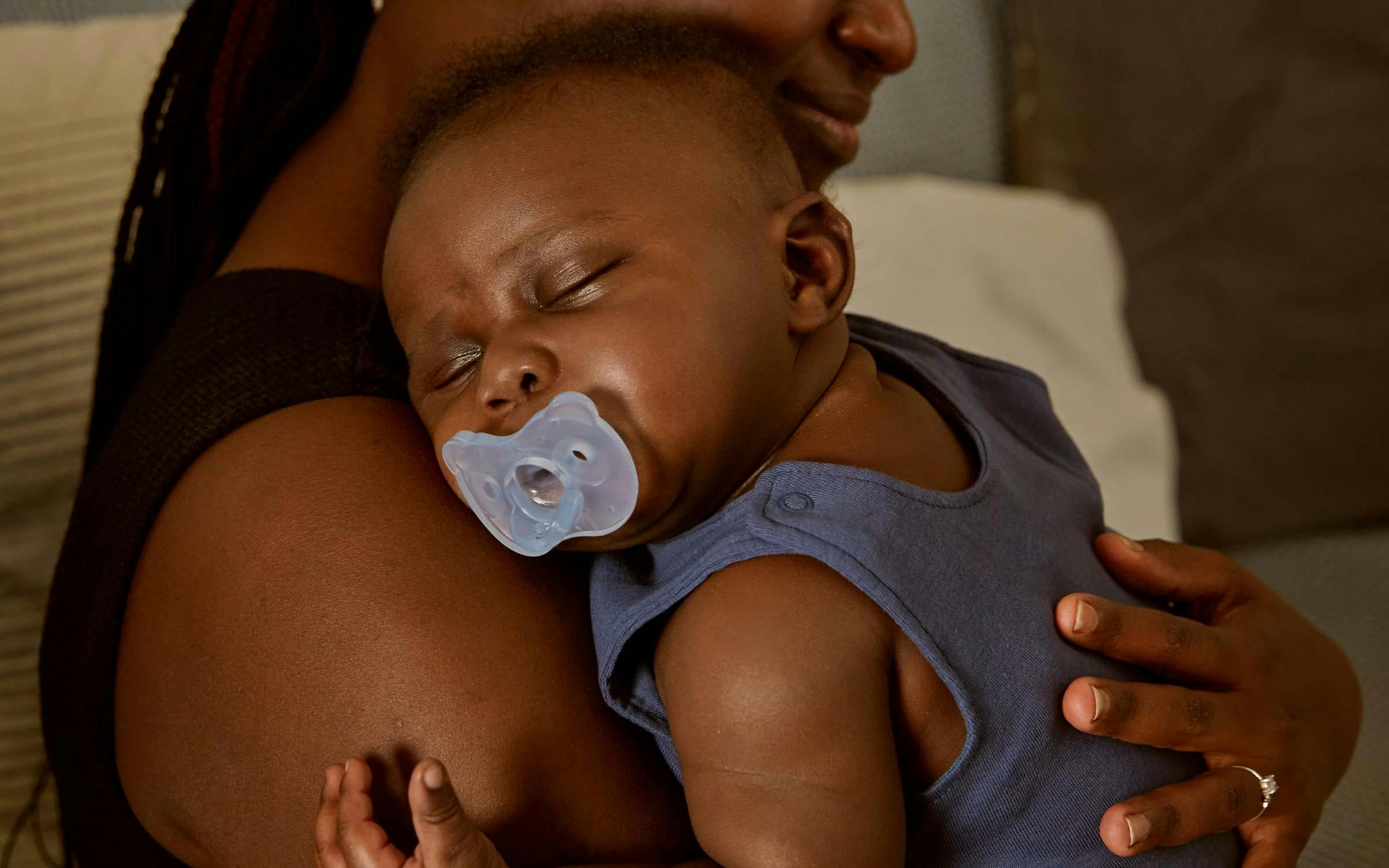
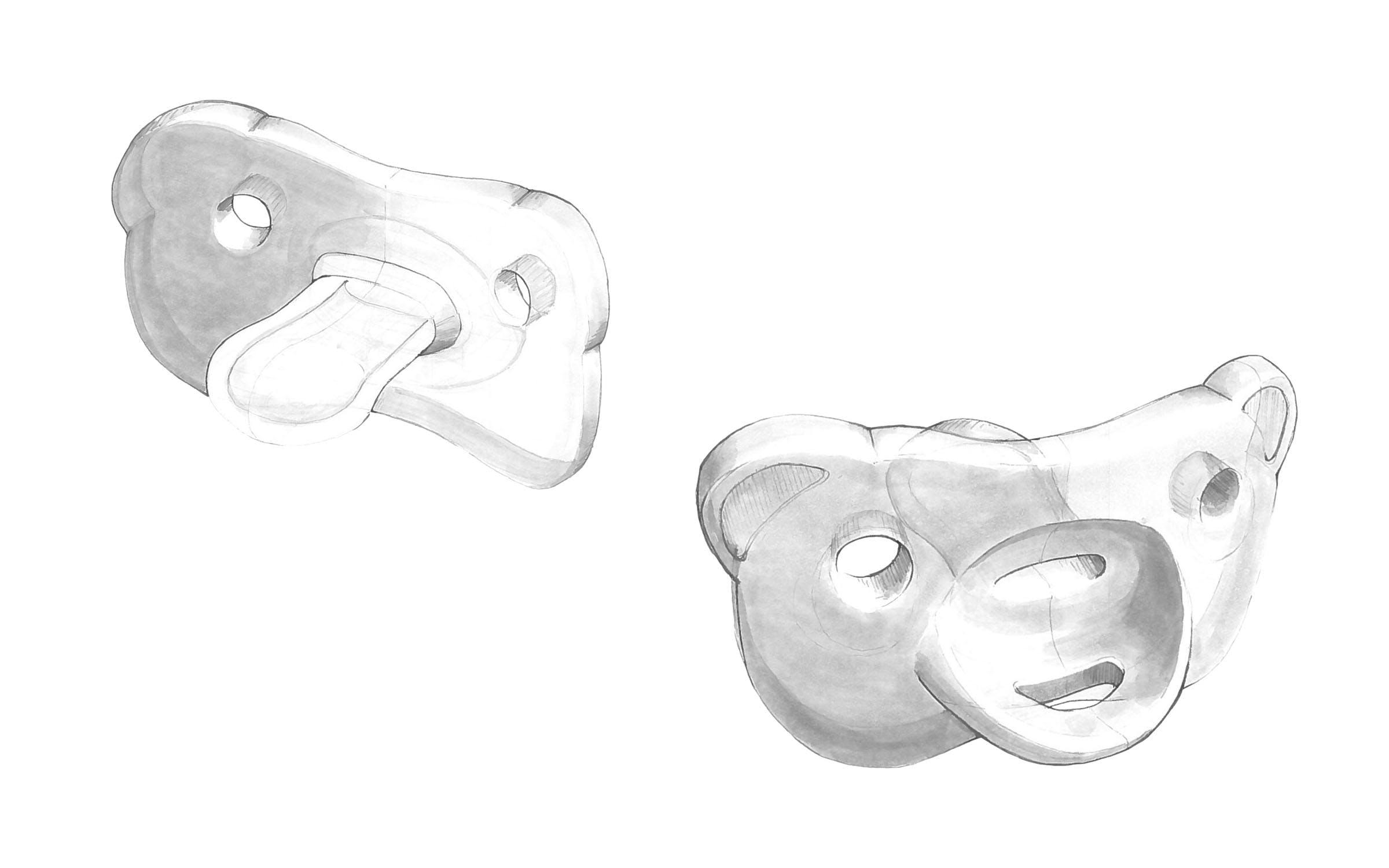
Cuteness above all
The design must take these motivations into account and align them with the specific characteristics of the manufacturer's brands. The suggestive power of design is intended to lead consumers to make more or less informed purchasing decisions for one product or another based on psychosocial influences and individual preferences.
For instance, when designing pacifiers for the Swiss brand BIBI, we placed the emphasis on tradition and Swissness. In contrast, the designs for Medela, a breast pump manufacturer from Zug, aimed to convey medical expertise. However, the one thing that all pacifier brands worldwide share - their point of parity - is their emphasis on cuteness.
Cuteness as a semiotic design principle plays an important role in the process of designing pacifiers. Cuteness or "Kindchenschema" refers to the physical features commonly associated with babies but also young animals, such as a round face, high forehead, large eyes, chubby cheeks and a small nose and mouth. These features trigger an innate caring response in humans that motivates us to protect and care for infants. A panda bear's face also has these characteristics. So when designing for Medela's all-silicone pacifier, we decided to incorporate it into the product to make it lovable and appealing to parents.

Satisfying materiality
Choosing the appropriate material and handling of surfaces and textures are crucial for designing pacifiers. Designers should take into account not only material-specific and ergonomic needs but also cultural preferences. Research indicates that consumers in Romance language regions, including Southern Europe, Central and South America, tend to favor designs made of brown materials that resemble natural rubber. On the other hand, those living North of the Alps, as well as in North America and Asia, prefer pacifiers made of transparent and light-colored materials due to their perceived cleanliness.
For all pacifiers, we define the surfaces facing the parents with a high-gloss polished finish. This makes the pacifier appear more hygienic, attractive, and high-quality both at the point of sale and on the baby's face. However, rough or textured surfaces feel more pleasant on the skin. Studies have shown that they provide babies with a more satisfying suckling sensation. Therefore, we have given all surfaces that come into contact with the skin and mouth a velvety touch.
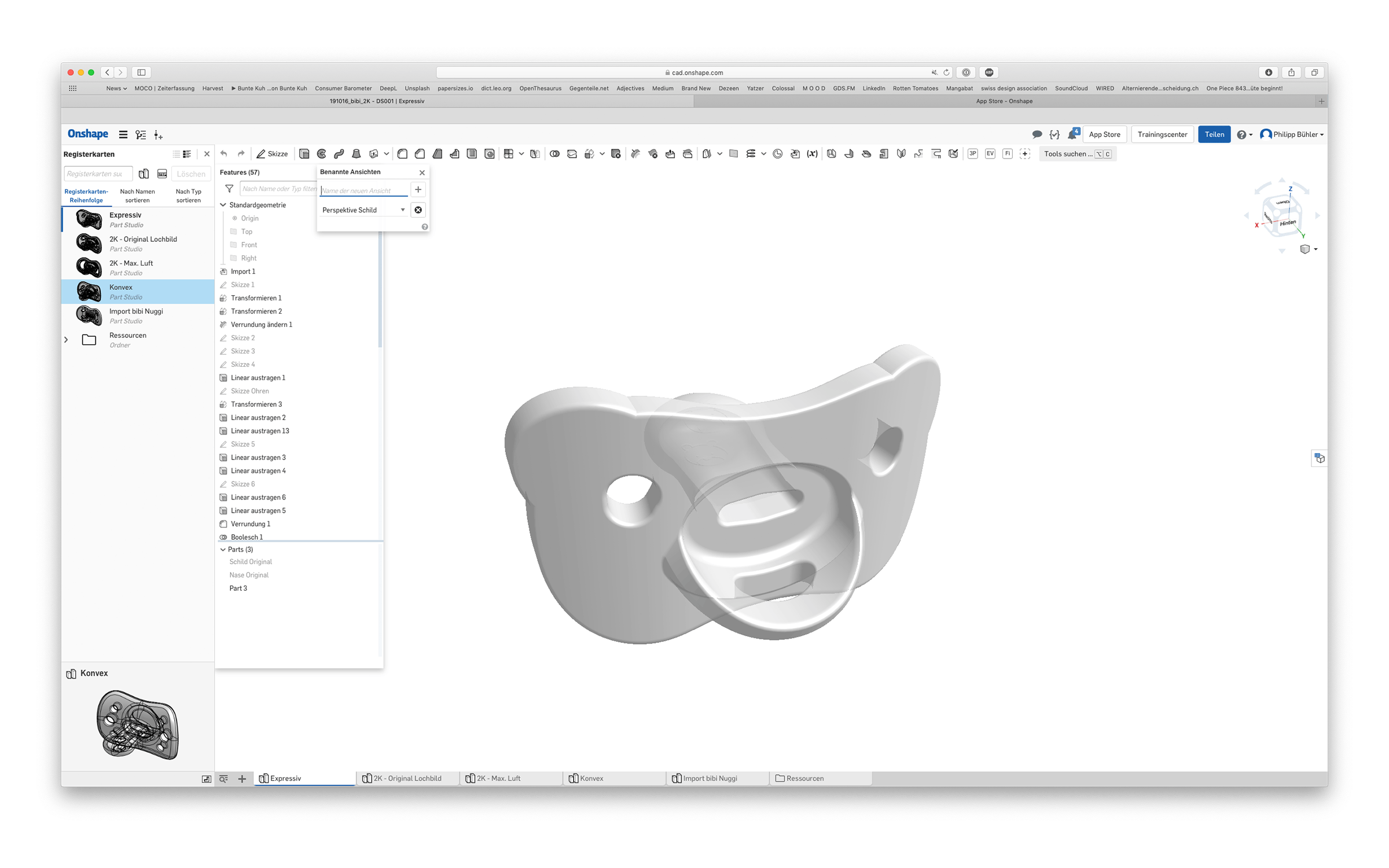
Massproduction Swiss made
Pacifiers are mass-produced consumer goods, manufactured industrially in huge quantities. The technical production specifications for the design are highly demanding to ensure quality and consistency. Furthermore, pacifier production in high-price countries like Switzerland must be fully automated, from injection molding to packaging, to be cost-effective. To meet these requirements, we collaborate closely with engineering partners and manufacturers from the outset. We ensure that all aspects of the design, from the initial concept to the final implementation, meet both the "hard" technical specifications and the "soft" user requirements. Our goal is to design a high-quality, user-friendly product that satisfies both industrial and consumer demands.
As designers, we also have to take into account the relevant safety standards and design accordingly. For example, dimensions are specified for safety-relevant features, such as air holes to prevent suffocation. As early as possible, our designs are executed as functional samples and tested according to the guidelines. This ensures that pacifiers also meet the standards later in industrial production and are safe for babies.
Once the design has been finalized and feasibility has been checked and approved, the color selection and logo integration must be defined based on the marketing requirements. Additionally, photorealistic renderings from various perspectives will be needed at this stage to allow Sales and Marketing to prepare for the product launch.
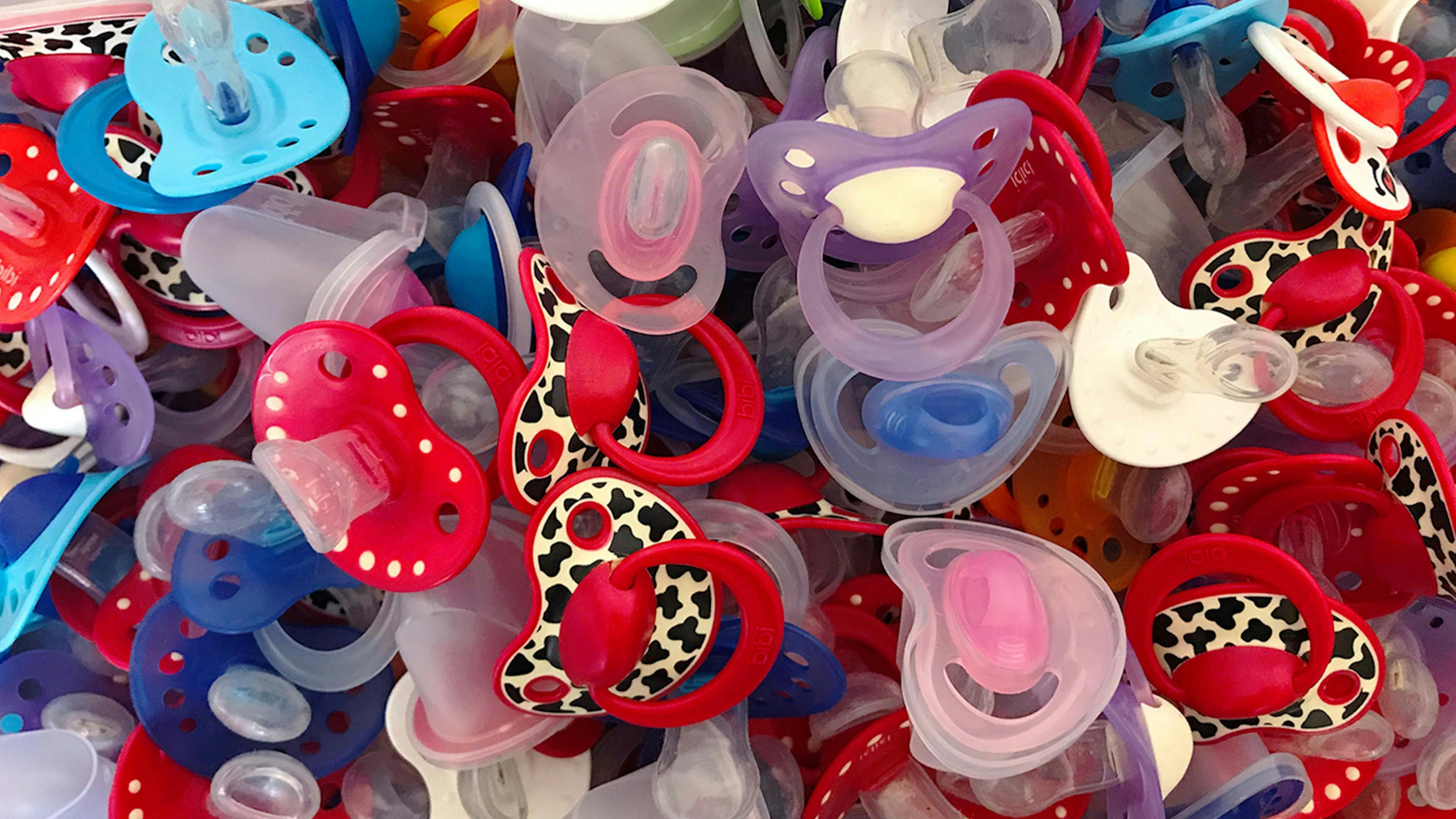
Designing for babies
Industrial design plays a central role in the development process of a new pacifier. In the design phase, all relevant requirements for a new product become visible and concrete for the first time. Visualizations and initial models make sensuality and user needs, ergonomics, sales and brand strategy considerations, manufacturing constraints, materiality, form and appearance comprehensible and negotiable for all stakeholders involved. A comprehensive and professionally managed design process informs the entire development up to the finished product.
Ultimately, the success of developing a sensory and ergonomic product like a pacifier through a heavily industrialized process relies on the satisfaction of both parents and babies. While it is essential to consider the parents' functional and psychosocial needs, it is equally crucial to prioritize the babies' preferences and comfort. If the pacifier is not up to their liking, they always end up spitting it out, rendering it useless. Therefore, the design team must continually emphasize the needs and requirements of both parents and babies to ensure a successful final product.
